Welcome to the enchanting world of Japandi design, where the tranquility of Japanese minimalism meets the warmth of Scandinavian coziness. Whether you’re just dipping your toes into the pool of interior design or you’re a seasoned decorator looking for fresh inspiration, “7 Unique Japandi Interior Design Concepts” is your guide to crafting spaces that radiate calm elegance and functional beauty.
In this guide, discover seven transformative ideas that blend simplicity with style, offering practical solutions for every room in your home. You’ll find that these concepts not only enhance the aesthetic appeal of your interiors but also bring a sense of peace and order to your daily life.
Imagine the joy of stepping into a room that feels both serene and inviting, a sanctuary where everything has its place and purpose. With each concept, you’ll gain confidence, knowing that thoughtful design can profoundly impact your well-being and elevate the ambiance of your home. Embrace the journey and watch as your spaces transform into harmonious havens with these inspired Japandi techniques.
Neutral Palette Exploration (Harmonious Serenity)
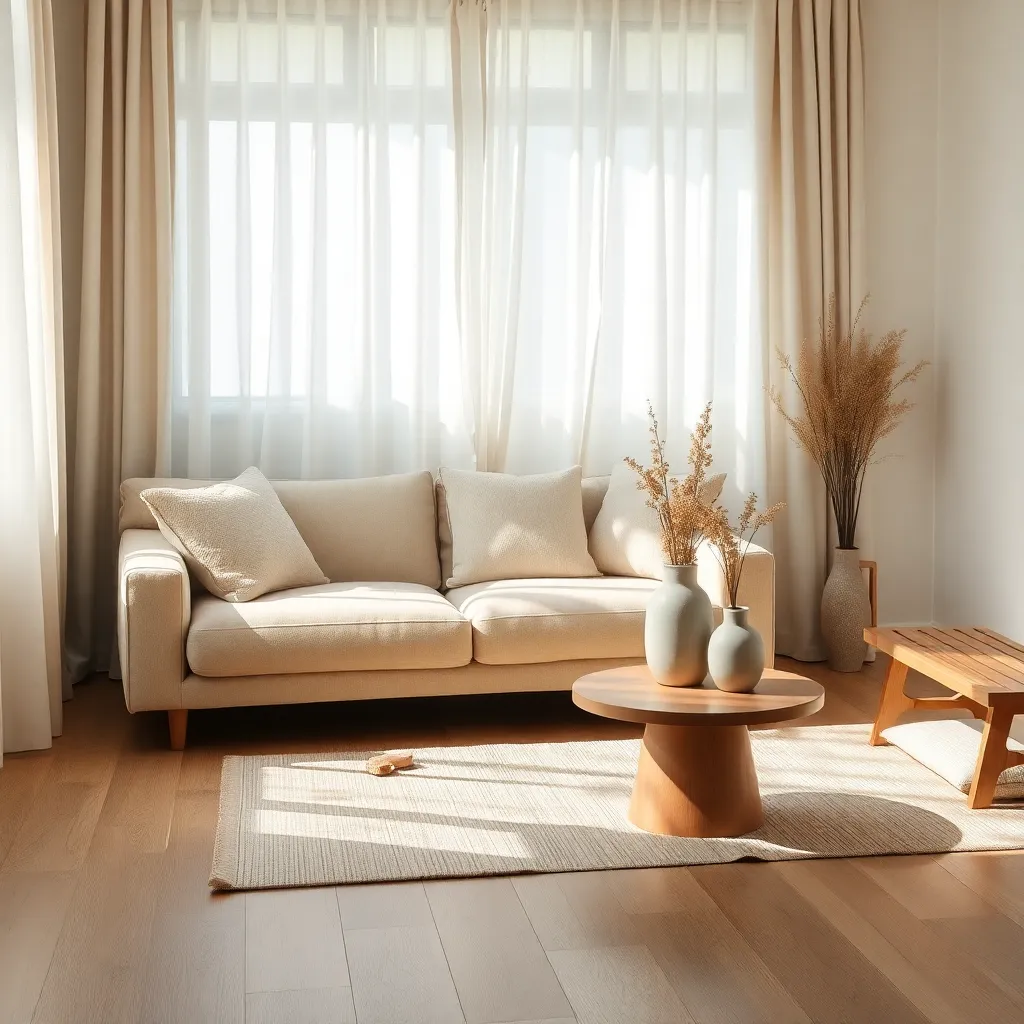
Incorporating a neutral palette in Japandi design is all about achieving harmonious serenity. Start with a base of soft whites, beiges, and greys to create a soothing canvas that promotes relaxation and balance.
To bring depth and dimension, consider layering various textures and materials. Use natural elements like wood, linen, and stone to add warmth and interest without overwhelming the space.
Furniture selection should focus on clean lines and minimalism, which are key to Japandi’s aesthetic. Opt for pieces that offer both functionality and beauty, such as a simple oak table or a linen-covered sofa, to maintain an uncluttered look.
Advanced decorators can experiment with subtle contrasts by introducing slightly darker shades or muted pastels. This approach adds visual intrigue while maintaining the overall tranquil atmosphere essential to Japandi design.
Natural Material Fusion (Authentic Warmth)
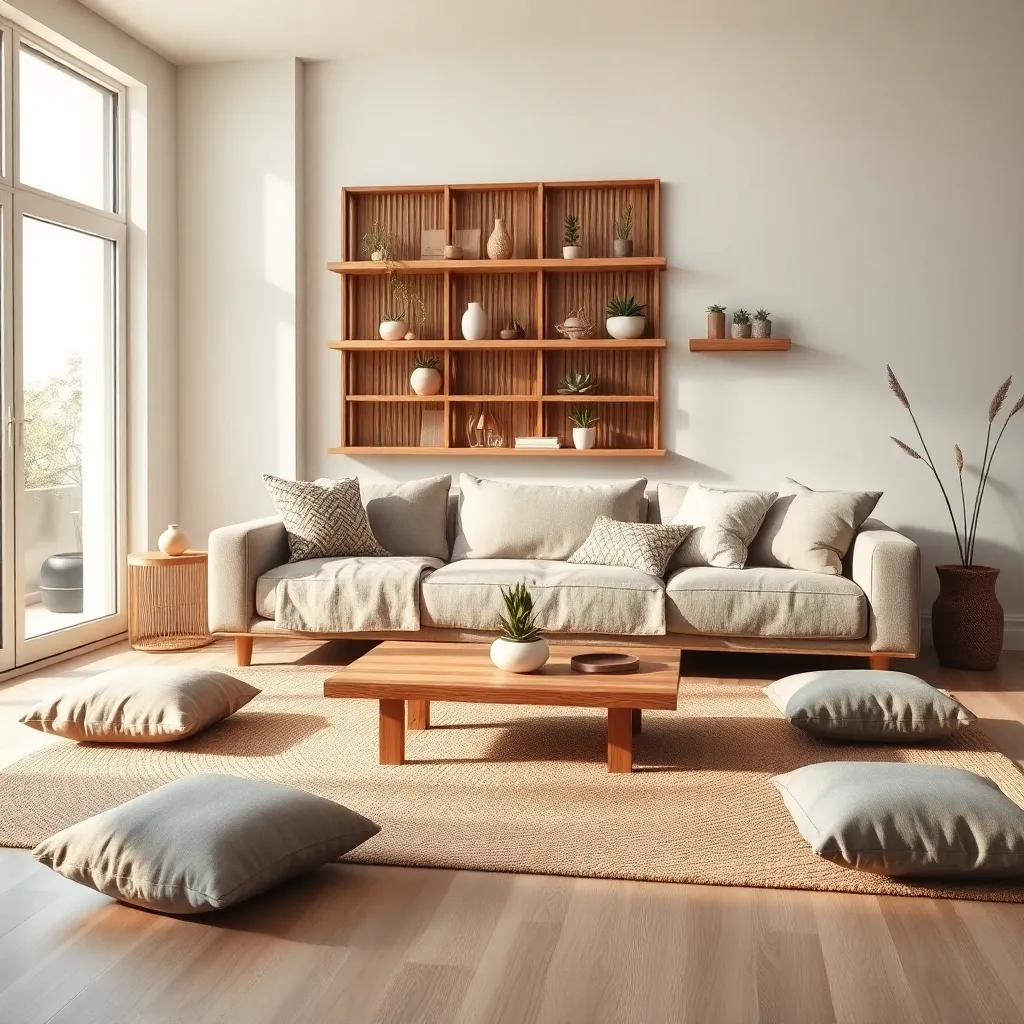
Blending natural materials in your Japandi space creates a sense of authentic warmth and tranquility. Start by incorporating elements like wood, stone, and bamboo to ground your design with a tactile, organic feel. Consider using light-colored woods such as ash or oak for furniture pieces, which not only introduce warmth but also maintain the minimalist aesthetic of Japandi style.
Layering textures is key to achieving depth and interest. Add soft textiles like wool or linen in neutral tones to keep the environment cozy yet streamlined. You can drape a wool throw over a bamboo chair or lay a linen rug on stone flooring to subtly contrast the textures while staying true to the natural palette.
For a more advanced touch, experiment with mixing different natural materials within a single piece of furniture. A table that combines a stone top with wooden legs can serve as a stunning centerpiece, offering both functionality and a conversation starter. Ensure that the color tones of the materials complement each other; for example, pair a light stone with a medium-tone wood to maintain harmony.
Placement of these natural elements should be strategic to enhance the flow of the space. Position larger wooden furniture against walls to establish the room’s structure, while smaller bamboo or stone accents can be interspersed to create visual interest without overwhelming the simplicity of the design. Finally, balance the natural materials with ample natural light to emphasize their beauty, using sheer curtains or strategically placed mirrors to maximize light exposure.
Minimalist Furniture Selection (Uncluttered Elegance)
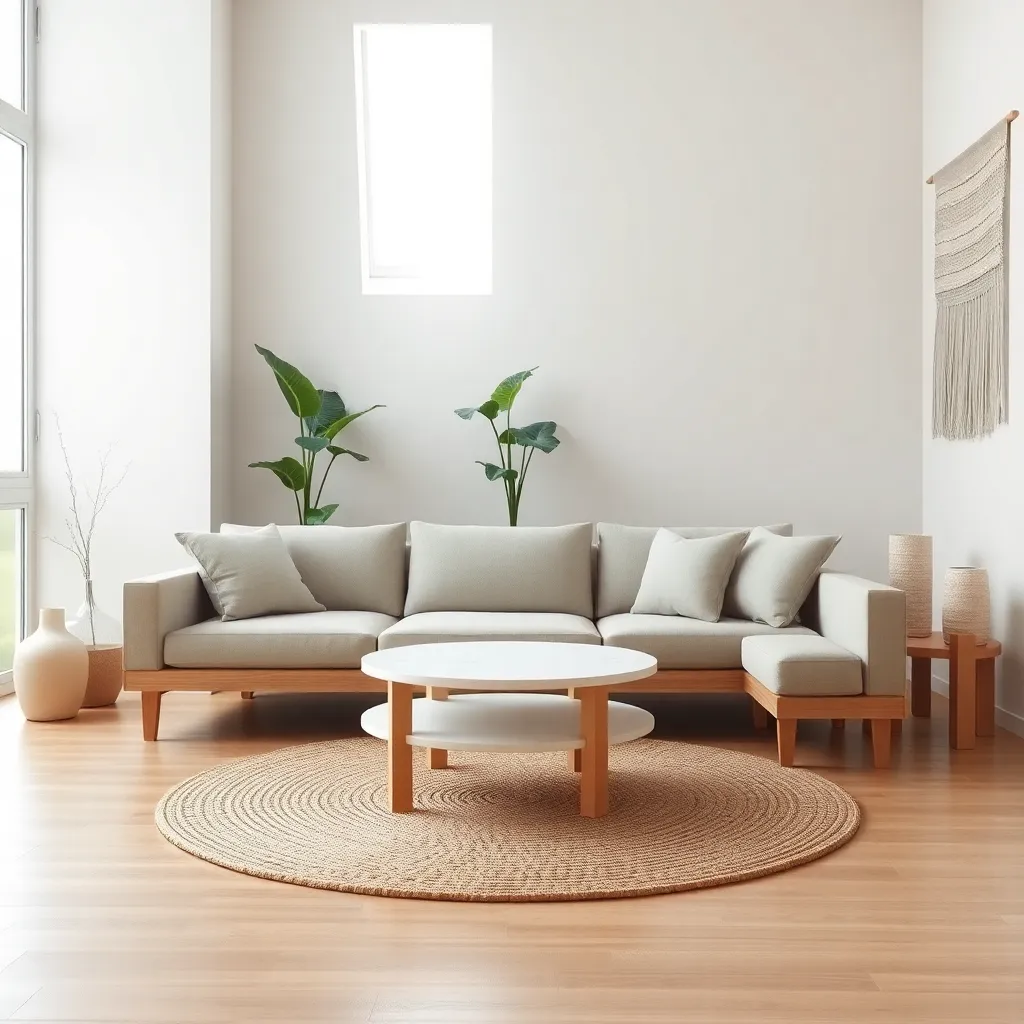
Incorporating minimalist furniture into your Japandi space is about selecting pieces that are both functional and aesthetically pleasing. Begin by choosing furniture with clean lines and simple forms, which beautifully align with the uncluttered elegance central to Japandi style.
Consider using a neutral color palette of whites, greys, and soft earth tones to enhance the minimalist aesthetic. Opt for pieces made from natural materials like light woods or bamboo, as these add warmth and texture without overwhelming the space.
For placement, ensure that each piece has its own purpose and place within the room. Embrace open space by avoiding overfilling areas; this allows each element to breathe and function effectively within the design.
Advanced decorators might experiment with multifunctional furniture such as a sleek, extendable dining table or a storage bench. These options not only save space but also add a layer of practicality and sophistication to your Japandi interior.
Layered Lighting Techniques (Atmospheric Ambiance)
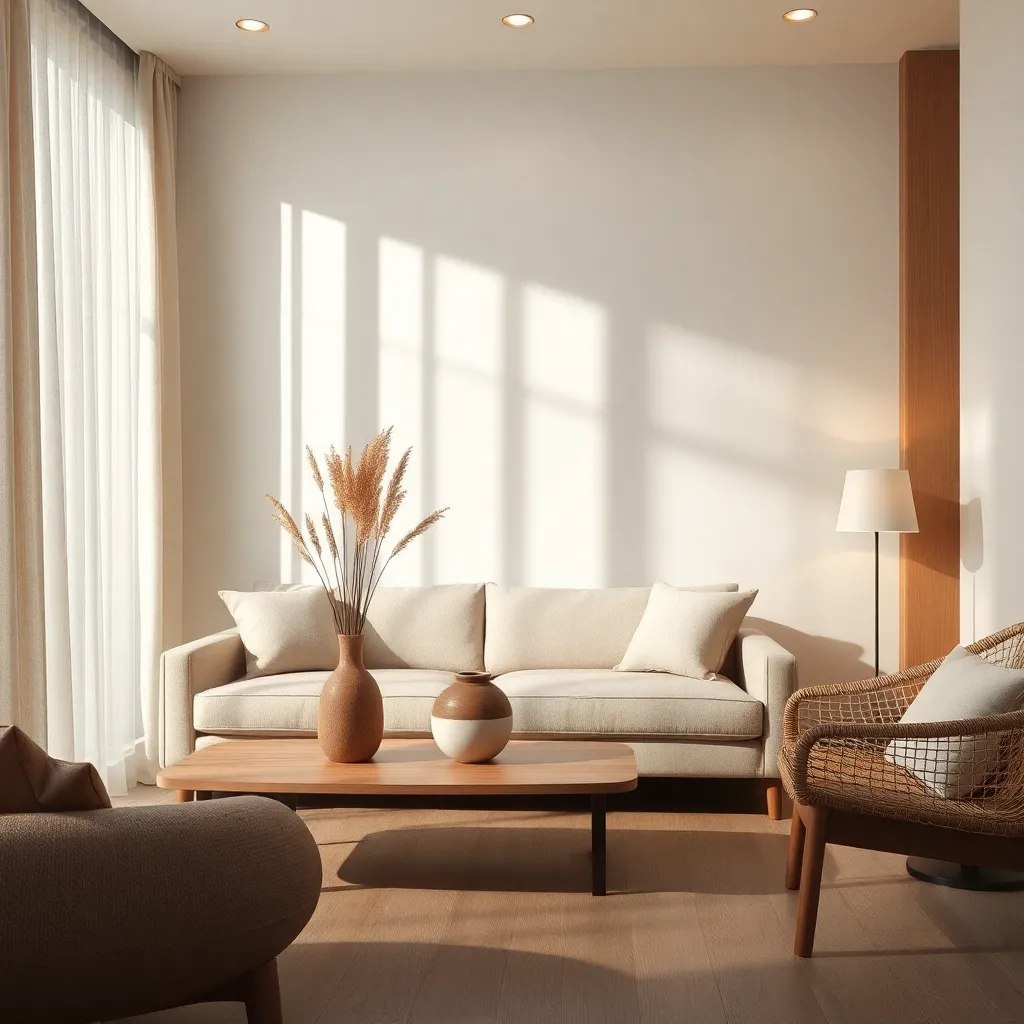
Layered lighting is essential in Japandi design for crafting an inviting and serene atmosphere. Start by incorporating three types of lighting: ambient, task, and accent, to create depth and warmth in your space.
For ambient lighting, consider using paper lanterns or rice paper shades that diffuse light softly throughout the room. These materials not only enhance the minimalist aesthetic but also add a touch of Japanese elegance.
Task lighting should be purposeful yet subtle, such as a sleek floor lamp next to a reading chair or a discreet pendant light over a dining table. Choose designs with simple lines and natural materials like wood or metal to maintain the Japandi balance of form and function.
Accent lighting highlights specific features or areas, such as artwork or architectural details. Use adjustable spotlights or LED strips to draw attention to focal points, ensuring the color temperature is warm to maintain the cozy ambiance typical of Japandi interiors.
Functional Decor Choices (Purposeful Beauty)
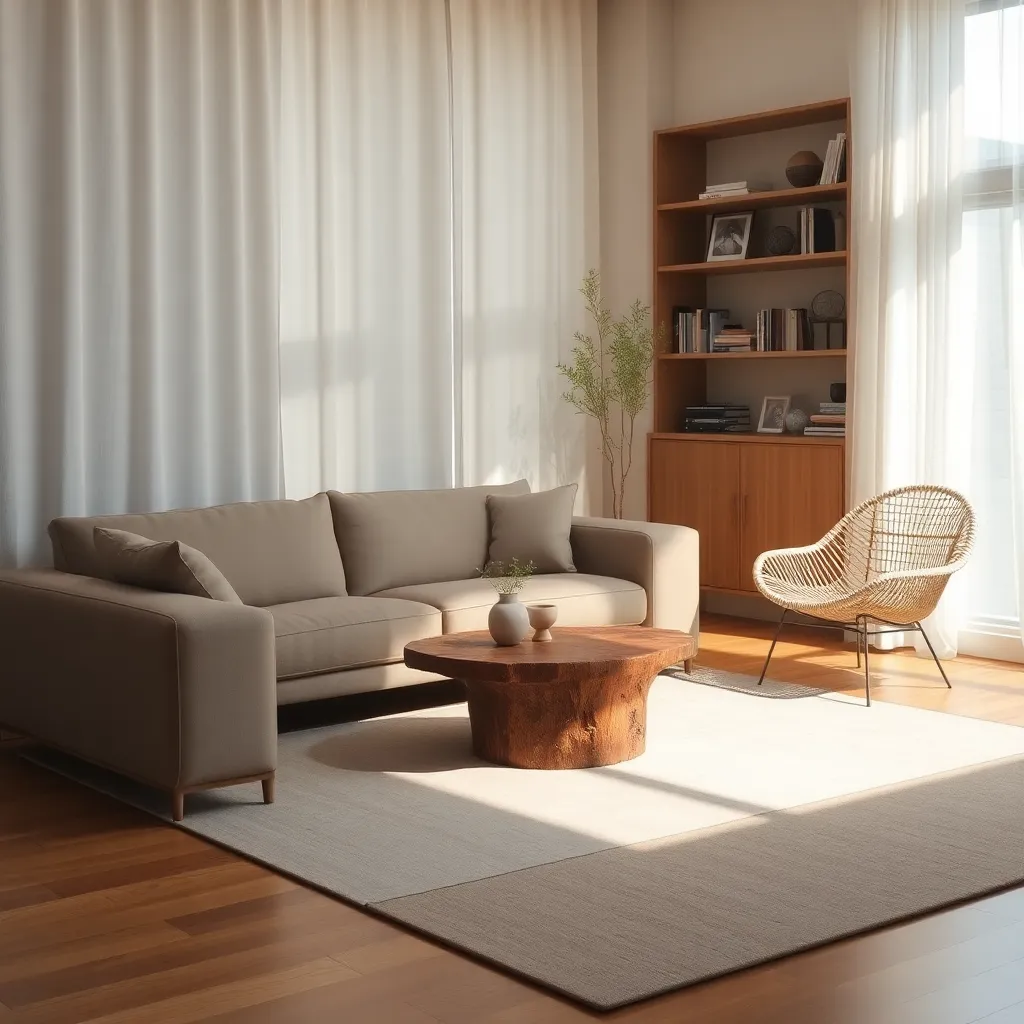
Infuse your home with purposeful beauty by choosing decor that serves both aesthetic and functional needs. Consider multi-purpose furniture, such as a sleek console table that doubles as a workstation, to save space while enhancing style.
Opt for storage solutions that blend seamlessly with your decor to maintain a clean, uncluttered look. Floating shelves in neutral tones can hold decorative items and essential storage boxes, integrating utility with elegance.
Incorporate decor pieces that offer dual functionality, such as ottomans with hidden storage or wall-mounted desks that fold away when not in use. Such choices not only conserve space but also add unique character to your rooms.
When selecting materials, prioritize durability and simplicity to ensure longevity and timeless appeal. Natural woods and muted fabrics not only align with the Japandi aesthetic but are also easy to maintain and versatile enough to complement evolving styles.
Low Profile Furniture Arrangement (Enhanced Flow and Space)
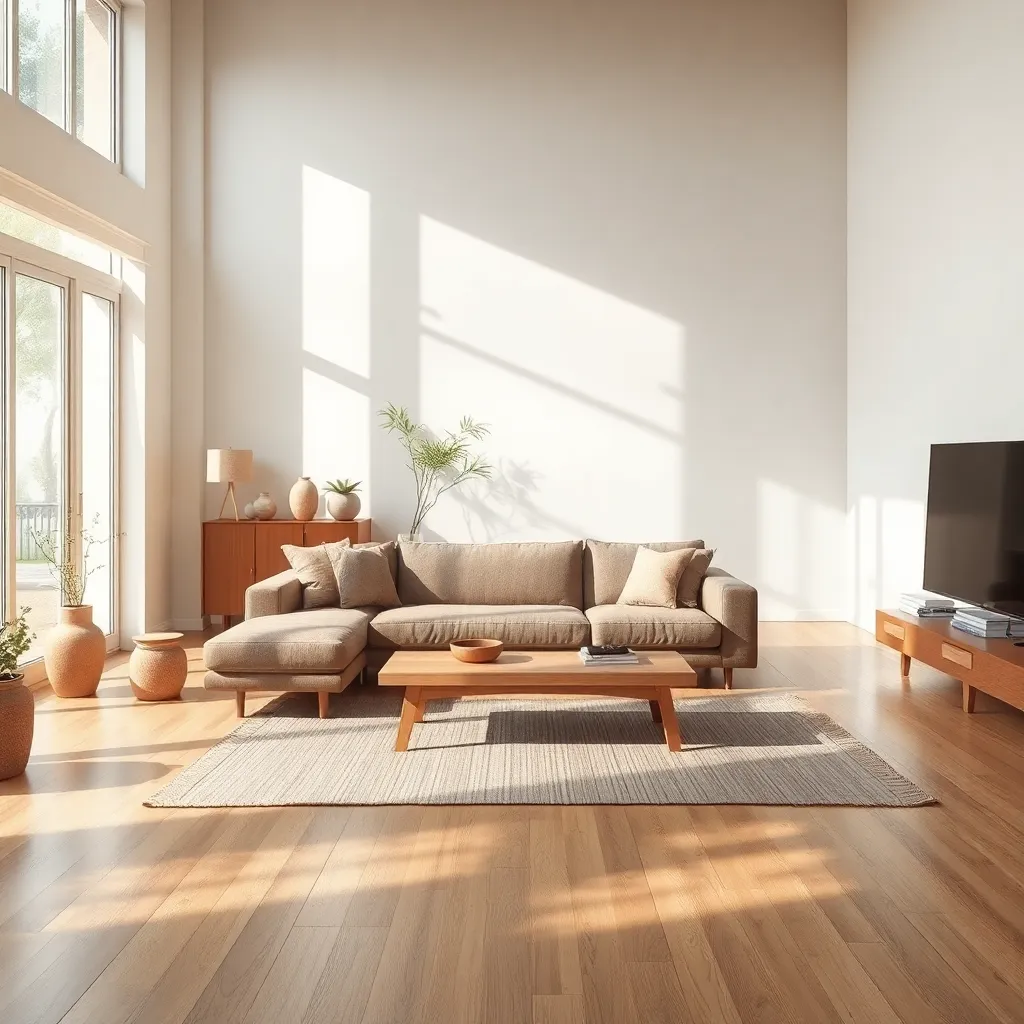
Incorporating low profile furniture in a Japandi-inspired space can significantly enhance both flow and spatial perception. Opt for pieces like low-slung sofas and coffee tables that maintain a visual line close to the floor, creating an illusion of more space and openness.
Consider furniture made from natural materials such as light oak or bamboo to align with the Japandi aesthetic. These materials not only imbue a sense of warmth but also resonate with the minimalist principles of both Japanese and Scandinavian styles.
Strategically place low profile furniture to maximize natural light and movement within the space. Arrange seating to face windows or open areas, which encourages a seamless flow of energy and light, essential in Japandi design.
For color schemes, stick to a palette that includes soft whites, muted grays, or earthy tones like taupe and beige. These colors complement low-profile furniture and enhance the serene and balanced atmosphere that Japandi spaces are known for.
- Tip for Beginners: Start with a low-profile sofa as your centerpiece and build around it with minimal accessories.
- Advanced Tip: Consider layering textures with cushions or throws in natural fibers to add depth without overpowering the simplicity of the space.
Organic Textiles Usage (Soft, Inviting Touch)
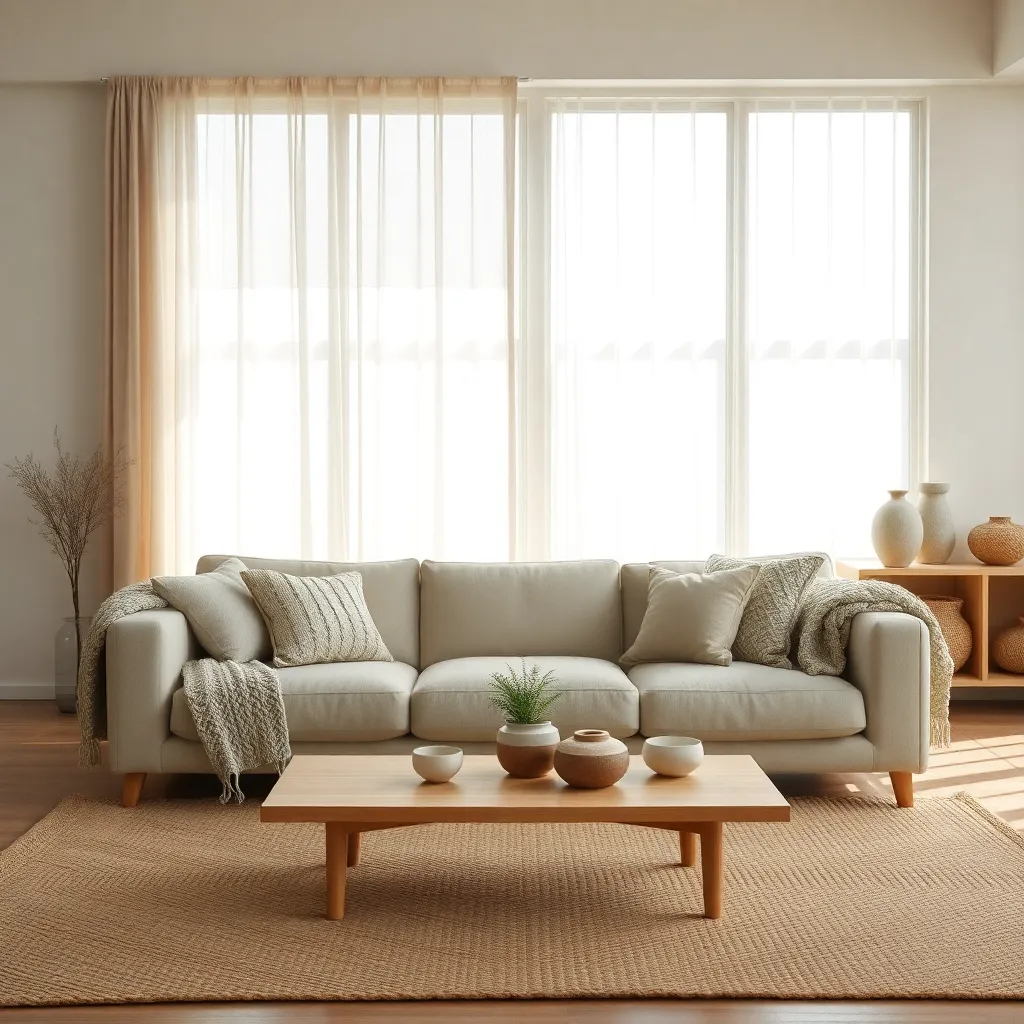
Incorporating organic textiles into your Japandi design can add a soft, inviting touch to the space. Choose materials like linen, cotton, and wool for your fabrics, which provide a natural and calming aesthetic that aligns perfectly with the minimalist Japandi style.
Consider using these textiles for elements such as throw pillows, curtains, and sofa covers. Opt for neutral colors like beige, soft gray, or muted earth tones to maintain the soothing and cohesive look typical of Japandi interiors.
For a more advanced approach, experiment with layering different textures to create depth and visual interest. Combine a linen throw with a wool blanket on a sofa, or pair a cotton rug with a jute mat to add subtle complexity without overwhelming the space.
To ensure these textiles enhance the overall design, pay attention to their placement and balance with other elements in the room. Distribute these materials evenly across the space to avoid clustering and ensure that each area feels equally inviting and harmonious.
Conclusion: Growing Success with These Plants
As we journey through the harmonious blend of Japanese minimalism and Scandinavian functionality, the ‘7 Unique Japandi Interior Design Concepts’ offers not just aesthetic inspiration but profound lessons for nurturing our relationships. By embracing simplicity and authenticity, prioritizing open spaces, and incorporating natural elements, we can cultivate environments that foster peace and connection. The seamless fusion of light and neutral palettes encourages calm communication, while the emphasis on craftsmanship and quality mirrors the importance of investing time and effort into our bonds. Sustainability and decluttering remind us of the value of letting go of what no longer serves us, making room for growth and understanding.
To put these insights into action, choose one concept to implement in your living space today, creating an environment that supports your relationship goals. As you do, remember to bookmark this article for easy reference, allowing these principles to guide your ongoing journey toward a fulfilling partnership.
Looking ahead, embracing these Japandi concepts can transform not only your home but also your relationship dynamics, paving the way for enduring love and connection. Let’s embark on this transformative path, empowering ourselves to design both our spaces and relationships with intention and care.
